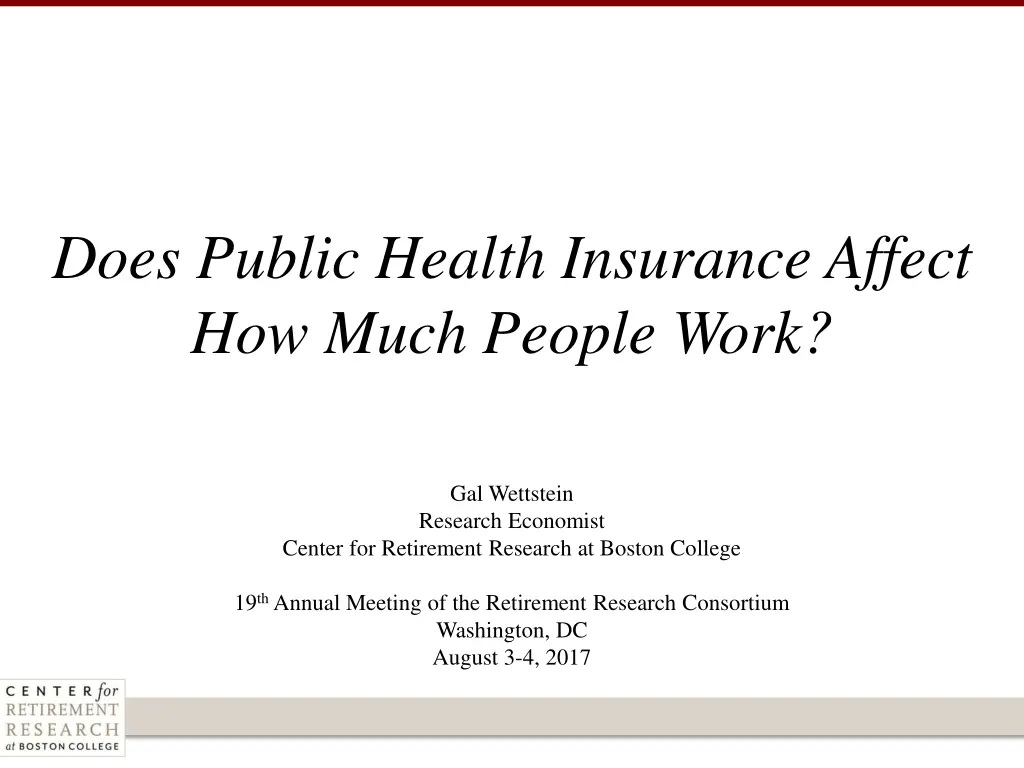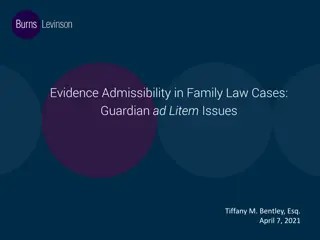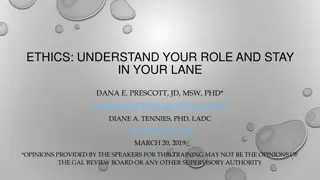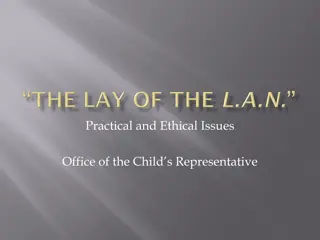
Impact of Public Health Insurance on Retirement Decisions
Explore how public health insurance, specifically Medicare Part D, influences the retirement behavior of individuals through a comprehensive analysis conducted by Gal Wettstein at the Center for Retirement Research. Learn about the effects of subsidized drug insurance on labor participation and job locking among older Americans nearing retirement age.
Download Presentation

Please find below an Image/Link to download the presentation.
The content on the website is provided AS IS for your information and personal use only. It may not be sold, licensed, or shared on other websites without obtaining consent from the author. If you encounter any issues during the download, it is possible that the publisher has removed the file from their server.
You are allowed to download the files provided on this website for personal or commercial use, subject to the condition that they are used lawfully. All files are the property of their respective owners.
The content on the website is provided AS IS for your information and personal use only. It may not be sold, licensed, or shared on other websites without obtaining consent from the author.
E N D
Presentation Transcript
Does Public Health Insurance Affect How Much People Work? Gal Wettstein Research Economist Center for Retirement Research at Boston College 19th Annual Meeting of the Retirement Research Consortium Washington, DC August 3-4, 2017
What does health insurance have to do with retirement? Most Americans get employer-sponsored health insurance. o Group plans often better than individual plans. Those near retirement with employer coverage may put off retiring job lock. o May lead to oversupply of labor. 1 1
What does this paper do? Limited policy variation affecting broad population to answer this question. Introduction of Medicare Part D in 2006 is a natural experiment for labor effects of public drug insurance. 2 2
Background on Medicare Part D Medicare provides health insurance to all Americans over age 65. o Until 2006 did not cover prescription drugs. o Share of health spending on drugs increasing, over 10% in 2005. 2006 addition of Part D gave everyone over age 65 access to subsidized drug insurance. 3 3
Background on Medicare Part D (contd) Particularly important for those near retirement. o 96 percent of ESI covers drugs. o Before Part D individual drug coverage limited. o Without retiree health insurance (RHI), retirees typically lost drug coverage. 4 4
Method Use Health and Retirement Study. o Limit sample to ages 55-68, years 2000-2010. Differences-in-differences. o Eligibility for Part D based on age (over 65) and year (after 2006). 5 5
Method (contd) Only those with ESI can be job locked. Focus on those with RHI. o Some have RHI until age 65 (when Medicare-eligible). Potentially less job locked with Part D, treatment group. o Others have RHI for life. Should not be affected by Part D, control group. 6 6
Method (contd) Work pattern of those turning 65: o pre-2006 shows change with job lock o post-2006 shows change without job lock Difference reveals effect of job lock Those with RHI for life are additional control o The same ages as the treated in the same years 7 7
Sample composition Composition of HRS Sample Ages 55-68 by Employer Health Insurance Status RHI after 65 unknown, 5% RHI for life (control), 12% No ESI, 41% RHI only to 65 (treatment), 14% ESI, no RHI, 28% Source: Author s estimates from the Health and Retirement Study (HRS), 2000-2010 8 8
Graphic evidence: full-time work pre/post- 2006 for treated Percentage of Individuals with RHI Only Until Age 65 Who Work Full Time, Pre- and Post-Medicare Part D, by Age 90% 60% 30% Pre-Part D Post-Part D 0% 55 56 57 58 59 60 61 62 63 64 65 66 67 68 Note: For clarity, pre-2006 observations are shifted up so the mean of those below age 65 is the same before and after 2006. Source: Author s estimates from the 2000-2010 HRS. 9 9
Graphic evidence: full-time work pre/post- 2006 for control Percentage of Individuals with RHI for Life Who Work Full Time, Pre- and Post-Medicare Part D, by Age 90% 60% 30% Pre-Part D Post-Part D 0% 55 56 57 58 59 60 61 62 63 64 65 66 67 68 Source: Author s estimates from the 2000-2010 HRS. 10 10
Graphic evidence: full-time work by RHI status Percentage of Individuals Who Work Full Time, Treatment and Control Groups, After 2006 90% 60% 30% Treatment Control 0% 55 56 57 58 59 60 61 62 63 64 65 66 67 68 Source: Author s estimates from the 2000-2010 HRS. Pre/post comparison 11 11
Econometric model Outcomes: full/part-time work. Key independent variable: indicator for being over age 65, after 2006, with RHI limited to age 65. Also control for: o all interactions of those conditions; and o Year, age, individual fixed effects, and other demographic and health variables. 12 12
Hypotheses Part D decreased full-time work. o Because it potentially reduces job lock. Increased part-time work. o Because most employers offer ESI only for full-time work. Effect larger among the sick. o More difficult to work, but ESI also more valuable job lock particularly severe. 13 13
Part D reduced full-time work, increased part-time work Estimated Effect of Part D Eligibility on Labor Outcomes for Treatment and Control Groups 10% Treatment Control 5.9% 5% 2.0% 0.2% 0% -5% -8.4% -10% -15% Full-time Part-time Note: Solid bars are statistically significant. Source: Author s estimates from the 2000-2010 HRS. Regression Results 14 14
Big effects, but partially offsetting Baseline full-time work rate was 35 percent. o Part D leads to a decline of 8.4 percentage points, or 24 percent. 70 percent of decline is a shift to part-time. Only 30 percent fully retiring. 15 15
Big effects, but for moderate group To begin, no job lock for 41 percent with no ESI, or 14-19 percent with RHI for life Of remaining 40 percent, effects entirely driven by 2/3 who have at least one of: o cancer, heart disease, lung disease, stroke, arthritis or psychiatric conditions 16 16
Effects driven entirely by less healthy individuals Estimated Effect of Part D Eligibility on Labor Outcomes of the Treatment Group by Health 15% Sick Healthy 9.9% 10% 5% 0.5% 0% -1.1% -5% -10% -12.2% -15% Full-time Part-time Note: Solid bars are statistically significant. Source: Author s estimates from the 2000-2010 HRS. Regression Results by Health Status 17 17
Conclusion Labor declines among those around age 65 when provided with public drug insurance. o Full-time work declines by 8.4 pp, 24 percent. However, effects partially offset by part-time work increases, 70 percent of the full-time decline. No effect for those ~50 percent of population with no potential for job lock (no ESI, or RHI for life). Effect concentrated among the sick, no effect for healthy. 18
Graphic evidence: full-time work by RHI status (pre/post-2006) Pre-2006 Post-2006 90% 90% 60% 60% 30% 30% Treatment Control 0% 0% 55 56 57 58 59 60 61 62 63 64 65 66 67 68 55 56 57 58 59 60 61 62 63 64 65 66 67 68 Source: Author s estimates from the 2000-2010 HRS. Back 19 19
Regression results Estimated Effect of Part D Eligibility on Labor Outcomes, Overall and by Health Full-time -0.084*** (-0.031) 0.02 (-0.022) 15,382 Part-time 0.06* (-0.031) -0.01 (-0.022) 15,382 Estimated effect on treatment group Estimated effect on control group Sample size Note: Regressions also include year, age, and individual fixed effects, and controls for gender. Source: Author s estimates from the 2000-2010 HRS. Back 20 20
Regression results by health status Estimated Effect of Part D Eligibility on Labor Outcomes, Overall and by Health Full-time Sick -0.12*** (-0.037) 0.042 (-0.026) 10,733 Part-time Sick 0.099*** (-0.038) -0.022 (-0.027) 10,733 Healthy -0.01 (-0.065) -0.027 (-0.045) 4,649 Healthy -0.011 (-0.059) 0.035 (-0.043) 4,649 Estimated effect on treatment group Estimated effect on control group Sample size Note: Controls are year, age, and individual fixed effects, gender, marital status, Census division, household wealth, self-reported health, body-mass index, cancer, heart disease, lung disease, stroke, arthritis, and psychiatric conditions. Source: Author s estimates from the 2000-2010 HRS. Back 21 21


















